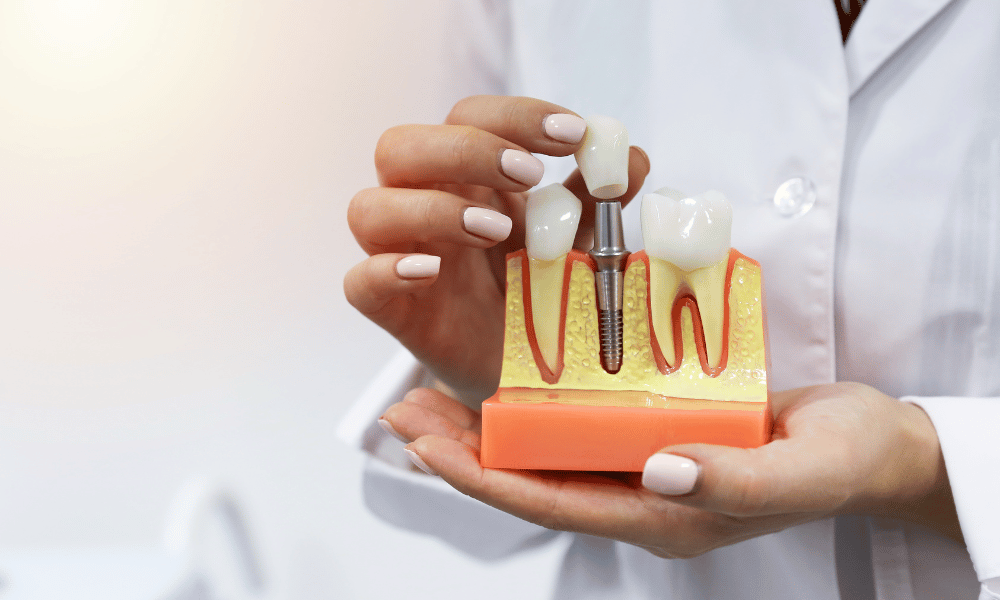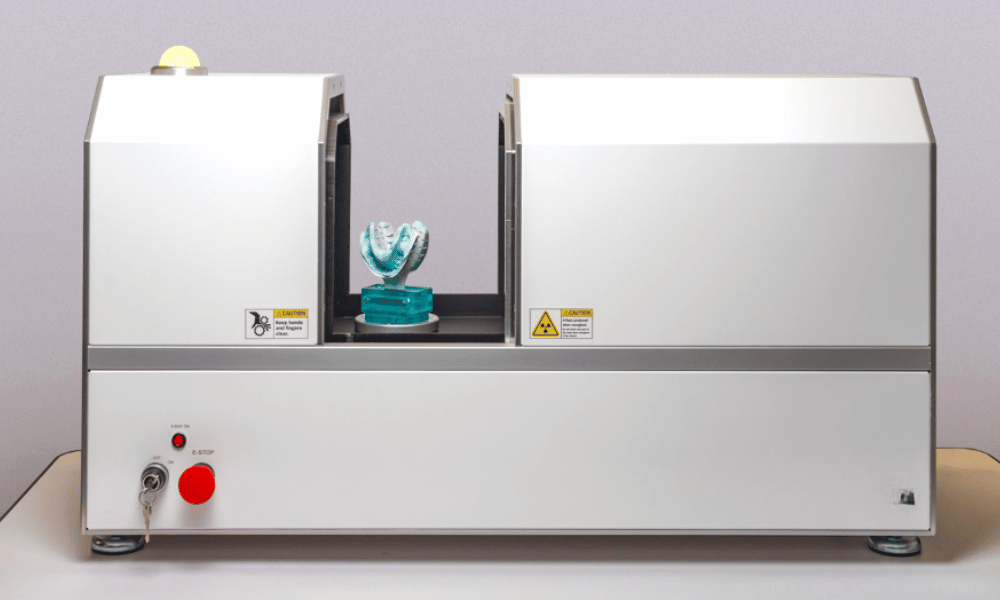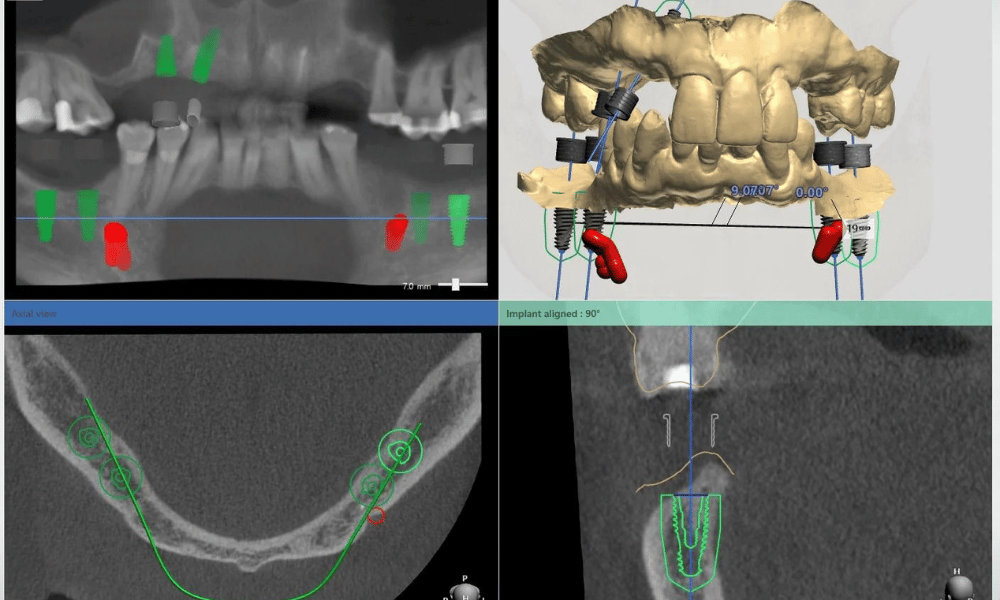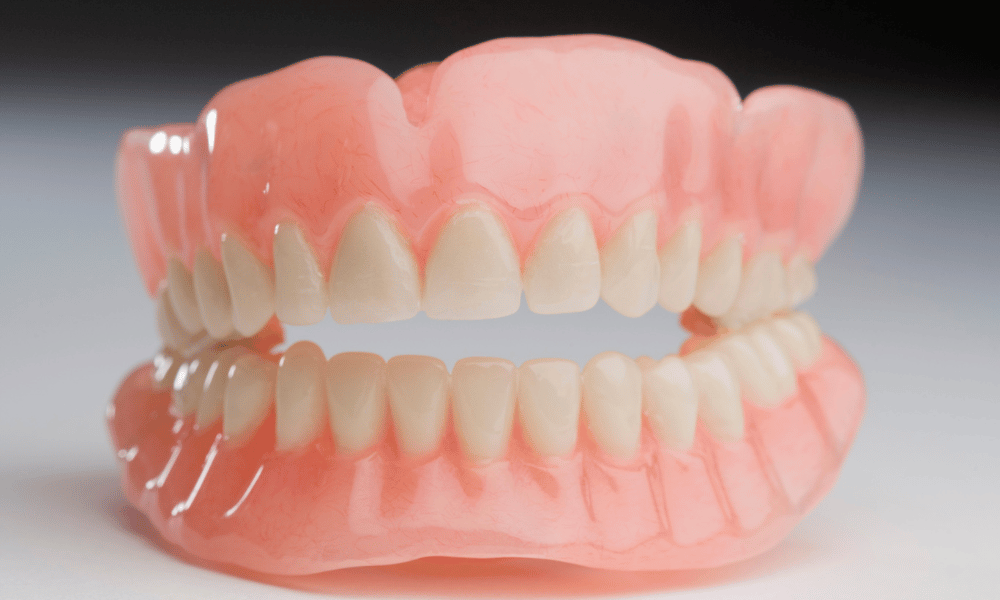March 15, 2023


Written by:
Greg Schubert
If you are looking for the perfect dental implant, you are out of luck, as there is no such thing. However, if you are looking to determine which implant fits your patient’s personalized case, then we can help. Two of the most popular implant restoration options are screw-retained implants and cement-retained implants.
Although they both have their advantages, there is not a clear answer to which one is better for restoration cases. When weighing cement vs. screw-retained implant crowns, you’ll need to consider the pros and cons of each to determine which is the best fit for your patients.
Screw-retained implants feature a metal post and a screw that attaches the prosthetic tooth to the abutment. Dental implant screws are placed through the implant to attach it to the bone. The screw access hole is then covered up by a composite to better fit the esthetic of a natural tooth. However, the presence of a screw does affect the esthetic of the tooth, especially in the anterior teeth.
Screw-retained implants also provide the option of an angulated screw channel. Angulated screw channel solutions offer the benefit of placing a screw anywhere between 0 and 25 degrees around the full circumference of the tooth. This benefit allows for easier installation, especially in cases with less occlusal clearance, and better esthetics, as it makes it easier to place the screw out of plain view.
While screw-retained implants are held in place by screws, cemented implants are held in place by a type of bonding cement. Cement-retained implants are a durable and highly esthetic option, as the lack of screws allows for a continuous natural appearance surrounding the circumference of the restoration.
The most important consideration to make in cemented implants is to avoid leaving excess cement around the restoration. Excess cement can lead to complications with the soft tissue surrounding the restoration.
The debate between cement and screw-retained implants is not black and white, as every patient case is different, and each option has its own pros and cons. Determining which option is better for a patient ultimately comes down to how each performs in five key areas.
One of the biggest priorities for patients is the appearance of their dental restorations—patients want a realistic and consistent restoration. Of course, dentists must always balance esthetics with functionality. Between the two implants, cement-retained implants are the more esthetic choice.
Screw-retained implants are limited by their design. Since each tooth is attached using a dental implant screw and an abutment, each one has a noticeable screw hole. The composite used to fill in the screw holes helps to cover up the screws, but it is often uneven and creates an inconsistent look around the tooth, especially in anterior teeth. Therefore, it is harder to achieve a completely natural look, and not all patients appreciate the visibility of the screw hole.
Ultimately, since they do not need an access hole for the screws, cement-retained implants are a consistently better choice for esthetic purposes. However, esthetics should not be the one and only deciding factor when choosing restorations.
The same factor that is a disadvantage for the esthetics of screw-retained implants is an advantage for their retrievability. Dental implant screws are intentionally easy to access after installation, so they are easy to remove if a problem arises in the future. As a result, you are able to remove the restoration and adjust any issues without damaging it, allowing you to easily place the restoration back.
The lack of screws on cemented implants makes them far more difficult to remove. If problems arise with a cement-retained implant, they are much more challenging to address. In fact, it is nearly impossible to remove the implants without completely damaging them.
Even if the screws loosen on screw-retained implants in the future, they can easily be tightened. However, screw-retained implants are not always an option if a patient does not have enough occlusal clearance to insert and adjust the screws.
One of the biggest deciding factors for implants is how well they stand up to the test of time and how easy they are to maintain. Both screw-retained and cemented implants can have complications in the future. However, the nature of these complications is different. For screw-retained restorations, the potential complications are technical issues, like fractured or loosened screws.
On the other hand, cemented restorations are more likely to cause biological complications, like bone or implant loss. One of the biggest risks of cemented restorations is that excess cement left during the installation process can serve as a source for harboring bacteria—this is a challenge as the excess cement is not always easy to see.
Of course, this is not only unpleasant but can also lead to more concerning dental complications like infection or implant failure. Therefore, when it comes to long-term maintenance, screw-retained implants are likely the better option.
Although cemented restorations may be more susceptible to biological complications, they are less likely to be damaged during daily use and may stand up better over time. In a systematic review of the retention rates of screw-retained vs. cement-retained implants, cemented implants showed fewer retention failures.
In studies less than five years, screw-retained implants had a failure rate of 0% to 46.66%, while cement-retained implants had a rate of 0% to 15.74%. In observations that lasted more than five years, cement-retained implants showed a failure rate of 0% to 23.72% and screw-retained implants 0% to 50%. Altogether, cemented implants have fewer retention failures overall.
Along with maintenance and longevity concerns, the strength of the materials also matters for the sake of patient peace of mind when eating and chewing. Both implant options can withstand high levels of force applied during biting, but cement-retained implants provide a bit more reassurance. The even and consistent construction of cement-retained implants makes them able to withstand high levels of force and pressure. Screw-retained implants can crack in the porcelain on the occlusal surface around the screw holes.
When weighing screw-retained vs. cement-retained implants, there is not always a clear and correct answer, and the final choice depends on your patient. For esthetic purposes, cement-retained implants are often the better choice, while screw-retained implants are easier to maintain. Fortunately, you aren’t alone in making the decision. At PRO-Craft Dental Laboratory, we offer a variety of quality implants to meet a range of patient needs.
No matter your choice of implant, you can rest assured that it is made with careful PRO-Craft craftsmanship for durability and longevity. In addition to offering hand-crafted restorations made in our state-of-the-art facility, we are also happy to provide guidance and support throughout the process. Simply contact us to discuss the best implants for your patient’s case, and our on-call support team is here to help.

With the development of technology like micro CT scanning, dentistry continues to make technological advancements in the industry. Micro-CT scanning in dentistry is crucial to intelligent...
Read More
Dental implant surgery is known for creating a natural appearance with durable appliances, but it relies heavily on precision for a successful procedure. This is where dental implant surgical guides...
Read More
Dental implants enable you to make a big difference in the lives of patients who need tooth restoration. For the past several decades, titanium has been the gold standard for replacement teeth. But...
Read More